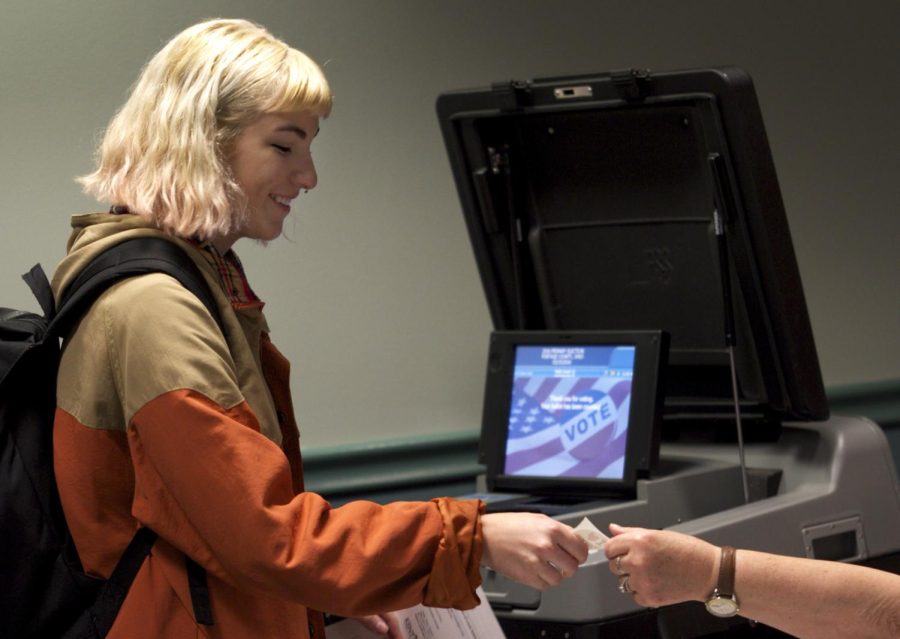Resolving the ‘rigged election’ controversy
Then-freshman photo illustration major Sarah Hines receives her ‘I love voting’ sticker at the Kent State Student Recreation and Wellness Center on Tuesday, March 15, 2016.
November 1, 2016
Election Day is just around the corner, and with the advancement of technology, ballots no longer have to be hand counted in order to determine the winner of the various political races. In Ohio — and other states in the country — not every county has the same type of voting ballots.
According to Board of Elections officials, Stark County has AccuVote TSX voting machines — touch screen machines received from Help America Vote. In Portage County an optical scanner is used. Paper optical scan machines will scan the ballot once it’s dropped in and then store the data on a memory card. Portage County also has touch screens, but those are reserved for those wtih a disability who are unable to fill out the paper ballot. Cuyahoga County also has paper optical scan machines.
Even with these different types of machines within Ohio — a well known battleground state — Republican presidential nominee Donald Trump has expressed that if he loses, it’s because the election was rigged.
“In order to actually rig an election, there would have to be widespread collusion from a lot of people,” said Jeanette Mullane, deputy director at Stark County Board of Elections.
Mullane explained that to keep everything fair, there is a “check and balance on everything involving ballots.”
One Democrat and Republican each have half of the passwords to the ballot program; one cannot open the program without the confidential information of the other. The program is double locked.
“(These are) all preventative steps we take to keep the integrity of the system,” Mullane said.
In Portage County, the possibility of rigging is also slim. The way the county’s optical scanner system works is that the voter fills out their ballot and then takes the ballot to the machine. They then put the ballot in the top of the machine that tabulates the ballot.
“Our tabulation system isn’t connected to anything,” said Terrie Nielsen, deputy director of Portage County Board of Elections. “It’s external; It can’t be hacked into.”
The ballots are also tabulated by a small group of people to make sure that what the machine is tabulating is accurate to prevent any mistakes.
“If there are any discrepancies we go and double check,” Nielsen said.
Mike West, a media and voter education specialist at the Cuyahoga County Board of Elections, reassured that the ballots cannot be tampered with. West said that once the ballots are dropped into the optical scanner, the machine reads the ballot on the spot. If there are any missed spots or if someone were to have voted too many times, it will tell that to the voter and give the ballot back if necessary. After the machine has scanned the ballot, and the voter has chosen to have the machine accept the ballot, then it goes into a secure box.
The votes are stored on a memory card that is then uploaded and double-checked for any discrepancies.
“If something’s weird, we scan it on the spot and look at it with human eyes,” West said.
Gabrielle Harrison is the technology reporter, contact her at [email protected].
























